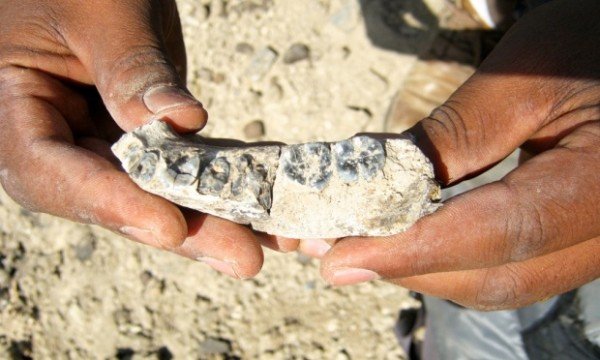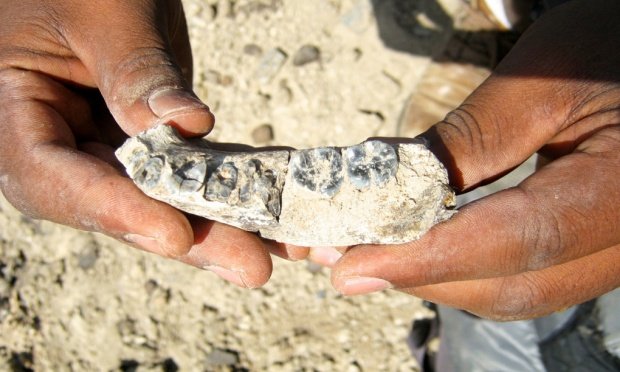A fossilized jawbone of what scientists claim is one of the very first humans has been discovered un Ethiopia.
The 2.8 million-year-old specimen is 400,000 years older than researchers thought that our kind first emerged.
The discovery suggests climate change spurred the transition from tree dweller to upright walker.
Prof. Brian Villmoare of the University of Nevada in Las Vegas said the discovery makes a clear link between an iconic 3.2 million-year-old hominin (human-like primate) discovered in the same area in 1974, called “Lucy”.
The fossil record between the time period when Lucy and her kin were alive and the emergence of Homo erectus (with its relatively large brain and humanlike body proportions) two million years ago is sparse.
The 2.8 million-year-old lower jawbone was found in the Ledi-Geraru research area, Afar Regional State, by Ethiopian student Chalachew Seyoum.
The fossil is of the left side of the lower jaw, along with five teeth. The back molar teeth are smaller than those of other hominins living in the area and are one of the features that distinguish humans from more primitive ancestors, according to Prof. William Kimbel, director of Arizona State University’s Institute of Human Origins.
A computer reconstruction of a skull belonging to the species Homo habilis, which has been published in Nature journal, indicates that it may well have been the evolutionary descendant of the species announced today.
The dating of the jawbone might help answer one of the key questions in human evolution. What caused some apes to climb down from the trees and make their homes on the ground.
A separate study in Science hints that a change in climate might have been a factor. An analysis of the fossilized plant and animal life in the area suggests that what had once been lush forest had become dry grassland.
As the trees made way for vast plains, apes found a way of exploiting the new environmental niche, developing bigger brains and becoming less reliant on having big jaws and teeth by using tools.
According to scientists, there were several different species of humans co-existing in Africa around two million years ago with only one of them surviving and eventually evolving into our species, Homo sapiens. It is as if nature was experimenting with different versions of the same evolutionary configuration until one succeeded.
